Do not make any of these common mistakes when climbing
While rock climbing can be exhilarating, it is a very risky activity too. Climbers who set off to tackle some cliff climbing challenges need to be experienced and skilled. It is imperative that they have a sound knowledge of all the required techniques, equipment and safety procedures. They need to know how to build anchors and how to tie the correct knots. They need to be proficient at belaying another climber and at rappelling safely. Such climbers also need to have sufficient experience to make good judgments with regard to the safety of any given situation.
When climbers are new to the sport, they naturally tend to be more cautious and have a healthy respect for the activity. Because of their relative inexperience, they are less likely to take serious risks. They will avoid dangerous situations and tend towards more benign climbs and make careful decisions.
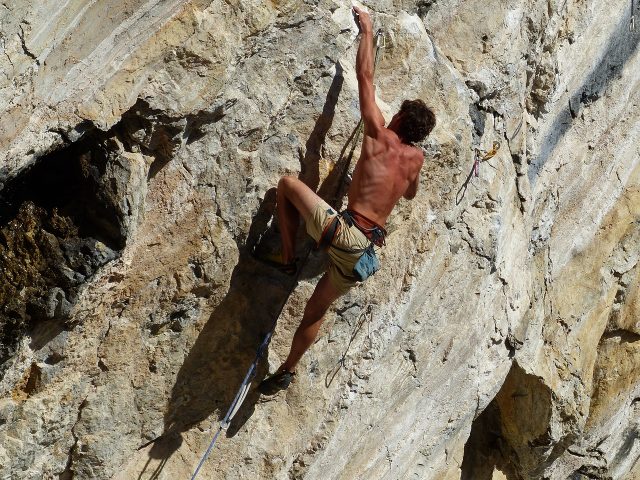
It is often the case that very experienced climbers will be the ones who become somewhat complacent with regards to safety instructions, and by doing so, put themselves in a lot of danger. Rappelling, for example, needs some skill to perform safely. The buddy system should always apply to climbing as well.
Always avoid becoming nonchalant or developing any careless habits. Shortcuts taken in order to make climbing go faster will compromise your safety. Never take any chances. Ever. Even if you think you are a pretty good climber, always double check your knots and anchors vigorously. Never take chances that could put yours or others lives at risk. Always pay close attention and concentrate fully on what you are doing while climbing. It is very easy to make mistakes. Some mistakes can be just a slip-up, but some can be fatal.
Stay alive
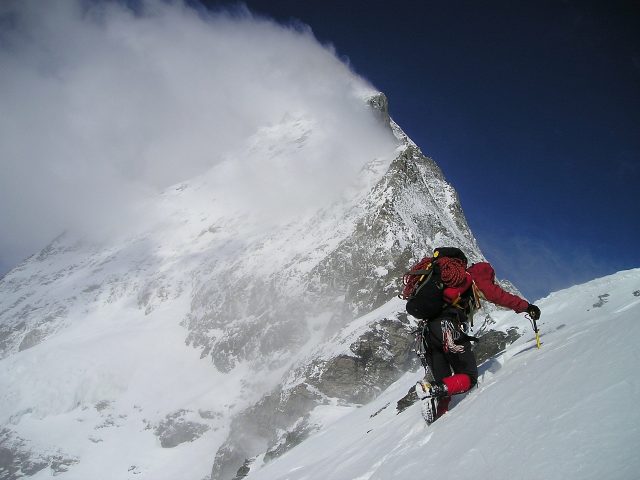
Avoid becoming a statistic. Stay alive and you’ll enjoy many more of these climbs. For this, you will need to heed the following:
- Do not attempt a climb which is reasonably beyond your capability (Do not try to be a hero!)
- Don’t be afraid or embarrassed to retreat from a route.
- Do not allow miscommunication between yourself and your climbing partner to spoil the climb.
- Always remember to take with you all the necessary gear and climbing tools.
Be realistic
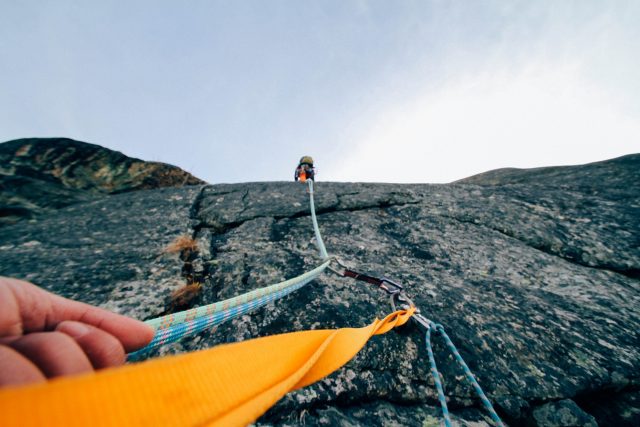
Always be realistic about your experience and skills when leading dangerous routes. Rather, work on your technique and strength by attempting the safer and shorter routes. Part of developing a good level of climbing ability is judging when to say no to a particular route. If your gut says don’t climb, listen to it.
- Always avoid climbing routes that are beyond your ability.
- Always choose a partner whose judgment you implicitly trust.
- Are the weather conditions and rock conditions good for climbing?
- Are you able to place the gear you need, such as nuts and cams?
- Will you be able to retreat easily?
- Do not feel obliged to continue with a route that you feel you will not manage; if your intuition tells you to re-think, then re-think. This intuition saves lives.
- Only climb for your own reasons and don’t do it for other people.
- Do not bend to pressure from any area whatsoever. If you feel unsafe, the decision is up to you alone.
Trust your gut
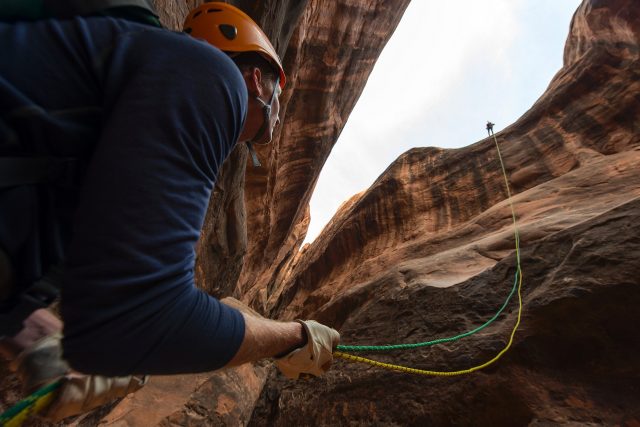
Never feel pressured to continue on a route, nor feel embarrassed to retreat. You might just be having a bad day, so do not continue if you are not completely feeling up to it for whatever reason. This could be due to weather, or it could even be that you just have a bit of a headache. Always trust your gut feeling about a situation. This does not mean always giving in to fear. Carefully consider the facts; are there sufficient safety features? Is the route well protected? If the route is well protected with bolts, nuts, and cams, chances are you will be okay and will not be hurt. Another way to look at it is that the cliff is not going anywhere, and will be there to climb another day.
Pay attention
Pay close attention to the condition of the rock and the prevailing weather. It is not a good idea to continue if there is thunder and lightning in the vicinity. Loose rock is dangerous and could cause a problem for your belayer if it falls.
Retreating is easy if there are rappel anchors or bolts in place on your route. If you are the one leading, then clip a carabiner onto the bolt and rappel down towards your belayer. Do not do this from a single anchor. Always stay focused and remember your life is more valuable than any piece of equipment. Building a rappel anchor can be redundant, but that will get you to terra firma in safety.
Communication
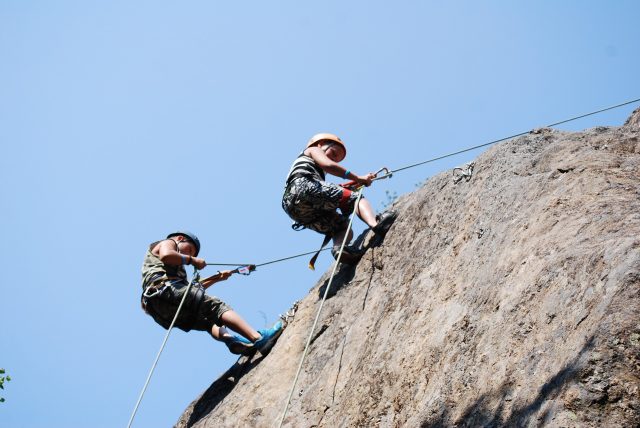
You will need to establish a good system of communication with your partner. Any miscommunication could endanger both of your lives. You will both need to know all the climbing signals and signs. Use the same “language” and you will be safe together.
The following tips can be implemented for better communication with your climbing partner.
- Formal voice commands which are clear and concise will avoid miscommunication
- Bad communication creates danger. Never make assumptions and be clear about the message.
- Never take your partner off belay if you have not clearly heard the words “off belay.”
- If there are many climbers on the cliff with you, always begin a command with your partner’s name to avoid confusion.
- Set in place some non-verbal commands that the two of you clearly understand. Wind or gushing water can drown out the sound. A series of tugs on the rope can communicate with the one on the other end of it.
- Make a system using numbers of tugs to have specific meanings with your partner which both of you will understand.
- When doing this type of climbing, you will need to be sure to have with you all the right gear and equipment, such as nuts and cams. These create anchors and place protection on the route.
- When you are tackling a single pitch or a sports route, you will be able to count the bolts and anchors. In the case of traditional routes, this is a bit more difficult.
- It can be difficult to decide just which pieces of gear you will need. It is far worse to have too few bits of gear than to find you have too many.
- Assess the route carefully before you begin to climb and work out what you may need.
- A guidebook is just a guide and if you think you need more gear than it recommends, take it. Climbing without enough gear is scary and will endanger your life. Take along plenty of nuts, cams, carabiners, and slings.
- You may find runout sections where gear cannot be placed.
Count the bolts
Before beginning to lead a sport route, you should count the bolts.
- Take along with you some extra quickdraws in case you drop one.
- Extra slings may also come in handy.
The famous mountaineer Edward Whymper, who did the first climb of the Matterhorn in 1865, wrote about it in his book called Scrambles Amongst the Alps 1860-69:
“There have been joys too great to be described in words, and there have been griefs upon which I have not dared to dwell; and with these in mind I say: Climb if you will, but remember that courage and strength are nought without prudence and that a momentary negligence may destroy the happiness of a lifetime. Do nothing in haste; look well to each step, and from the beginning think what may be the end.”
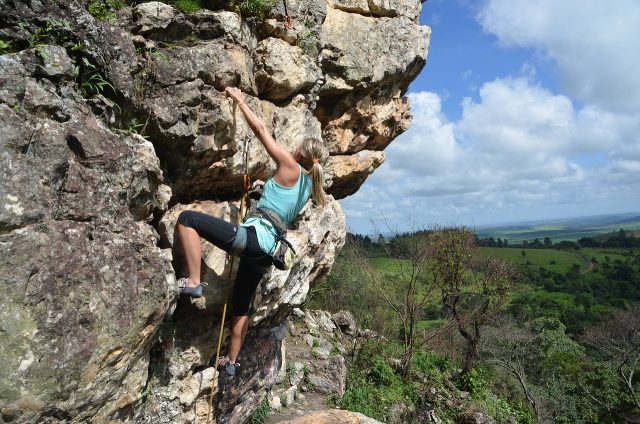
That sums up the exhilaration, the sense of achievement and the fear that accompanies climbing in a nutshell.
If you have any comments then please drop us a message on our Outdoor Revival Facebook page
If you have a good story to tell or blog let us know about it on our FB page, we’re also happy for article or review submissions, we’d love to hear from you.
We live in a beautiful world, get out there and enjoy it. Outdoor Revival – Reconnecting us all with the Outdoors.





